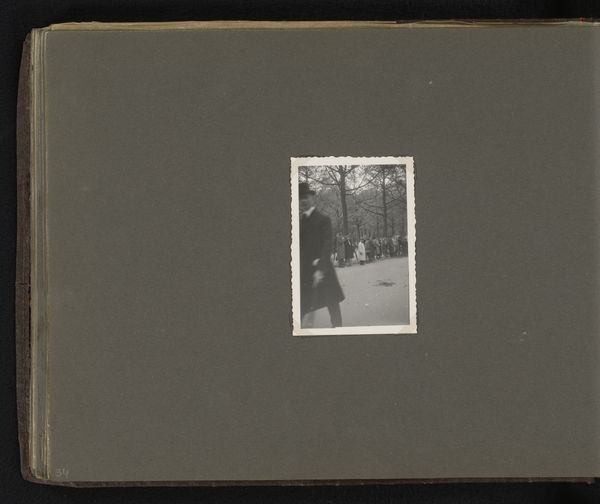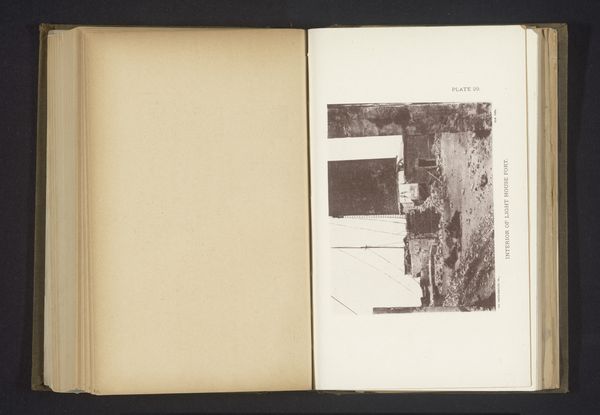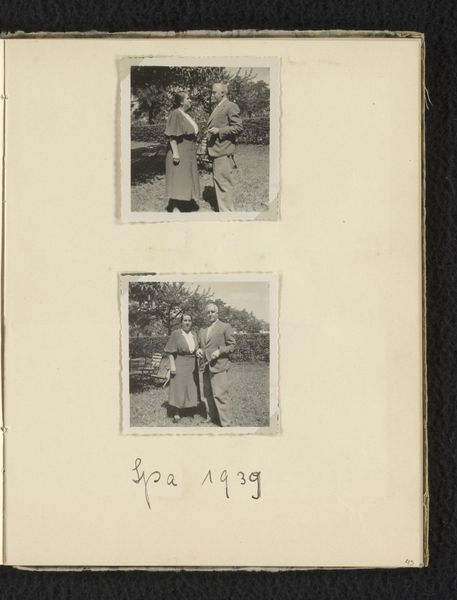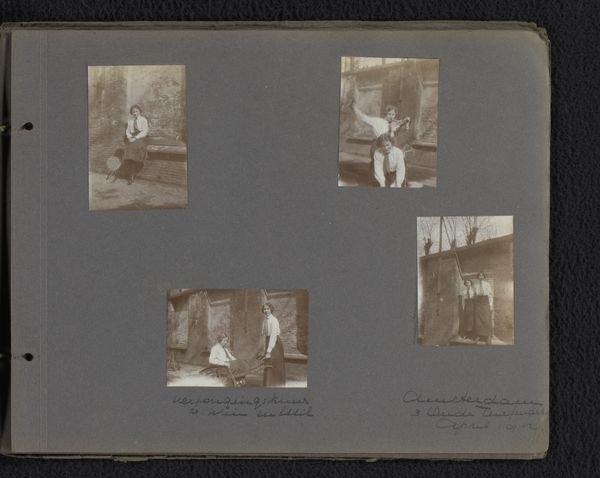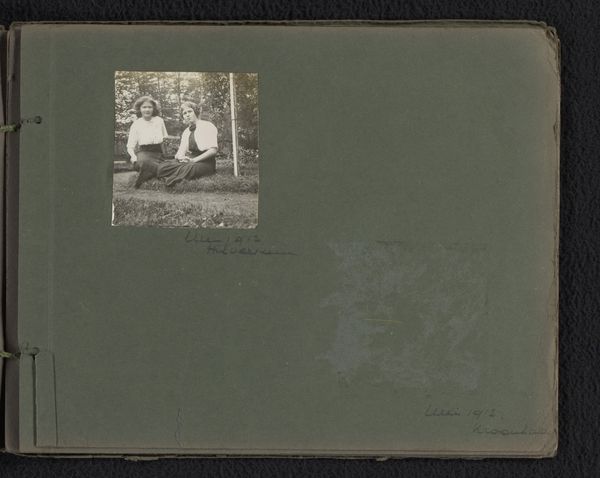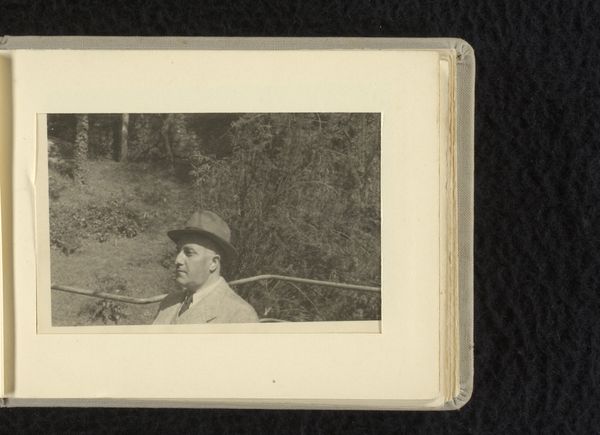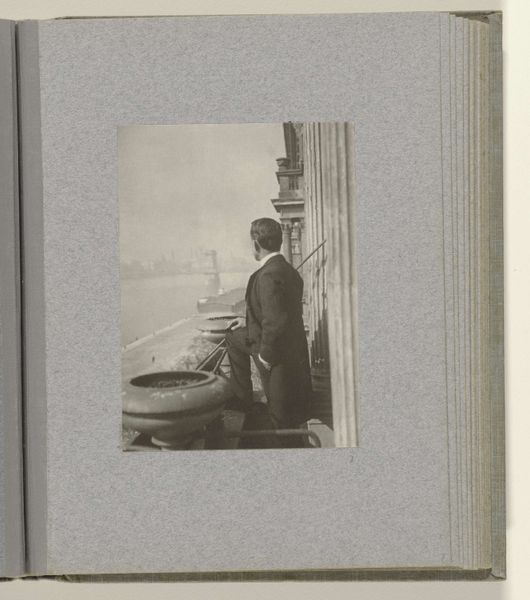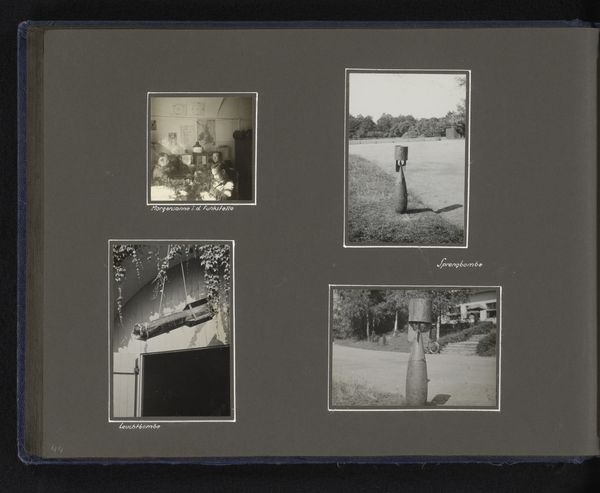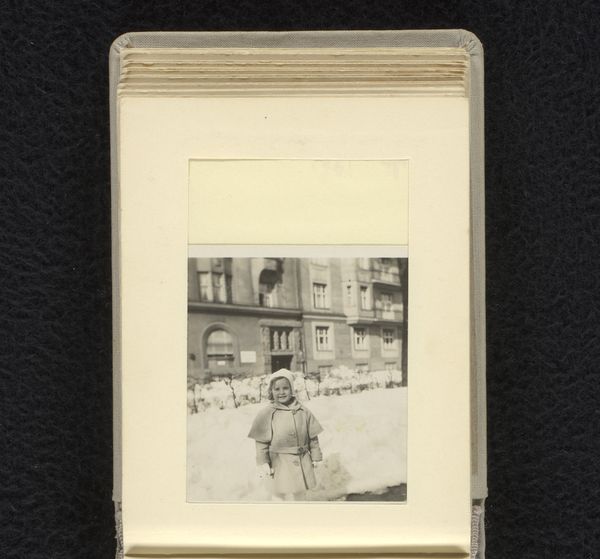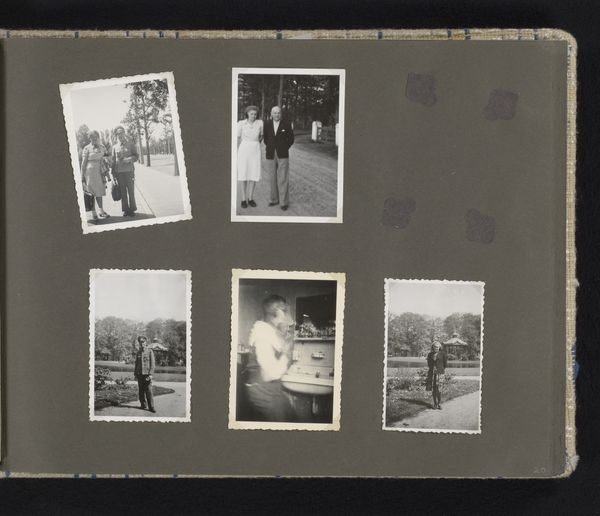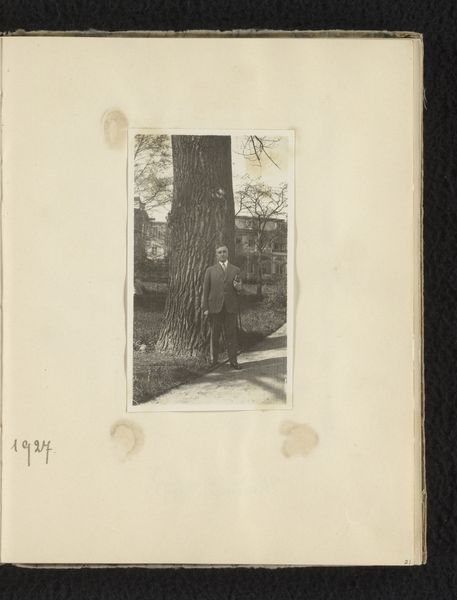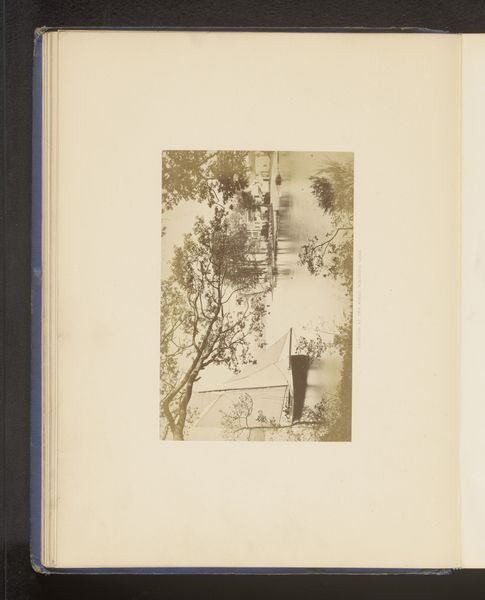
photography
#
portrait
#
garden
#
self-portrait
#
landscape
#
photography
#
realism
Dimensions: height 85 mm, width 65 mm
Copyright: Rijks Museum: Open Domain
Curator: This photograph, circa 1910, presents us with "Portret van Alfred Robertson in een tuin," found here at the Rijksmuseum. It's a beautifully understated piece. What’s your initial impression? Editor: Bleak. Not the garden, but the tonal values. It gives the figure of Robertson, and by extension the whole image, this feeling of being unmoored. Like he’s in-between spaces. Curator: Interesting take. To me, it feels serene. There’s a softness to the light, a gentle embrace by the garden. Notice the composition – how the house in the background anchors him, but isn’t quite in focus. The relationship of ground to body. It directs our focus to Robertson. Editor: Formally, that blurred background operates as negative space—or rather, as tonally indistinct from Robertson, drawing our eye to that central vanishing point of the garden that bisects the picture plane, which makes him the negative figure against its brighter hues. Curator: Do you think that visual tension adds to your bleakness? Perhaps his relaxed stance contrasts starkly against such severe compositional rigor? I’m thinking about who took the photo, was it him, was it somebody else close to him, and I am wondering about what exactly was the interaction. Editor: It is a classic portrait strategy—establishing dominance. Consider the interplay of line and texture across his attire; the almost studied carelessness of the pants’ folds versus the neat buttoning of the shirt’s sleeve. It indicates a specific articulation of control and release. Curator: You know, seeing it through your eyes has altered my perception! Initially, I read serenity, a calm portrait set in nature but those details hint at an untold story beneath the surface. It makes one ponder those lost, fleeting moments captured. Editor: Exactly. It reminds us of the photograph's power, not merely as representation, but also as structured interpretation, filled with encoded meaning we strive to decode. Curator: And now it speaks volumes that I missed that encoded meaning to begin with! Editor: That is why discussing is fundamental: it can reshape perception of something and discover meanings and significances previously concealed. Curator: Indeed, from a simple portrait to a study of implied tensions. Fascinating.
Comments
No comments
Be the first to comment and join the conversation on the ultimate creative platform.

